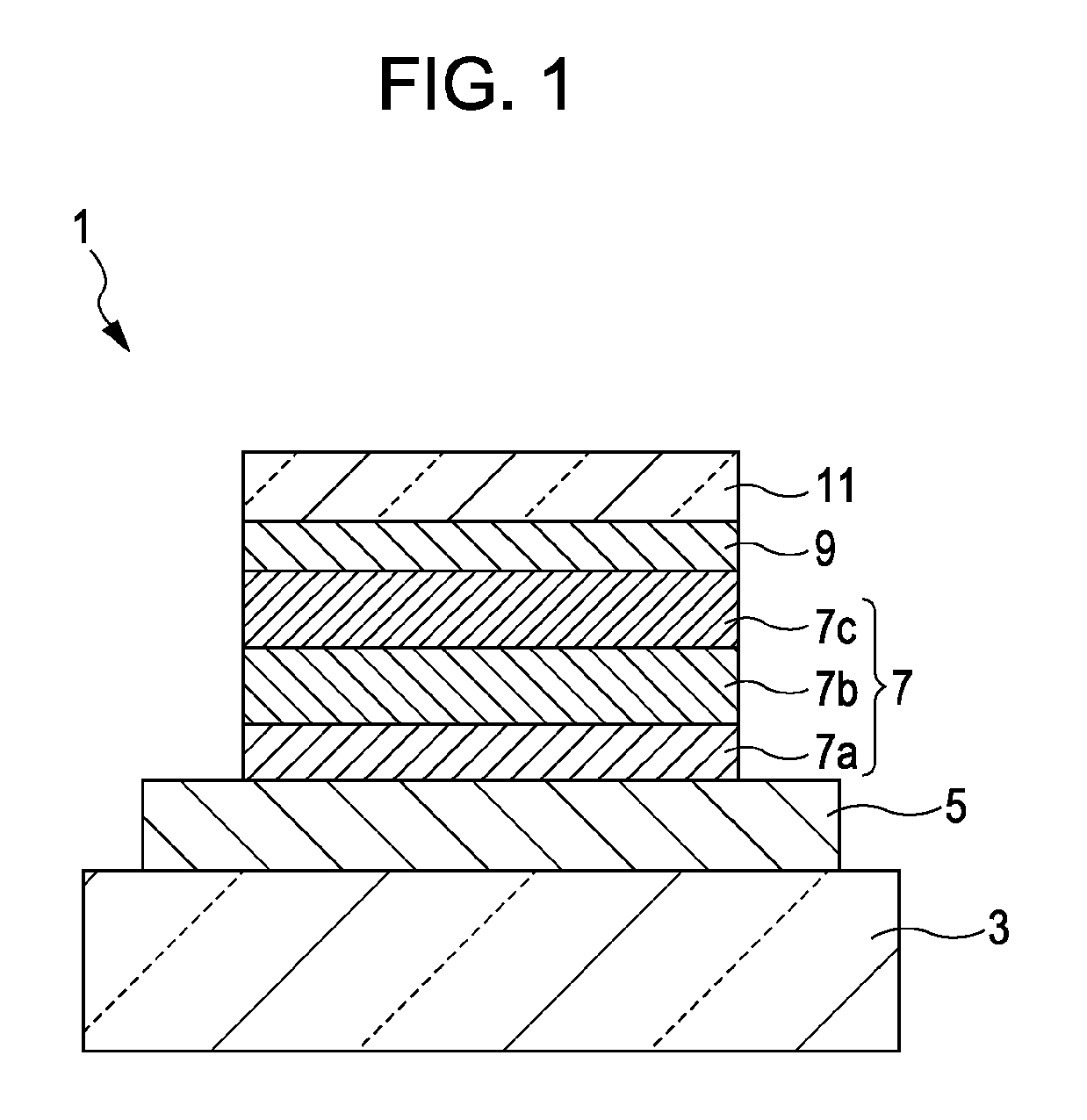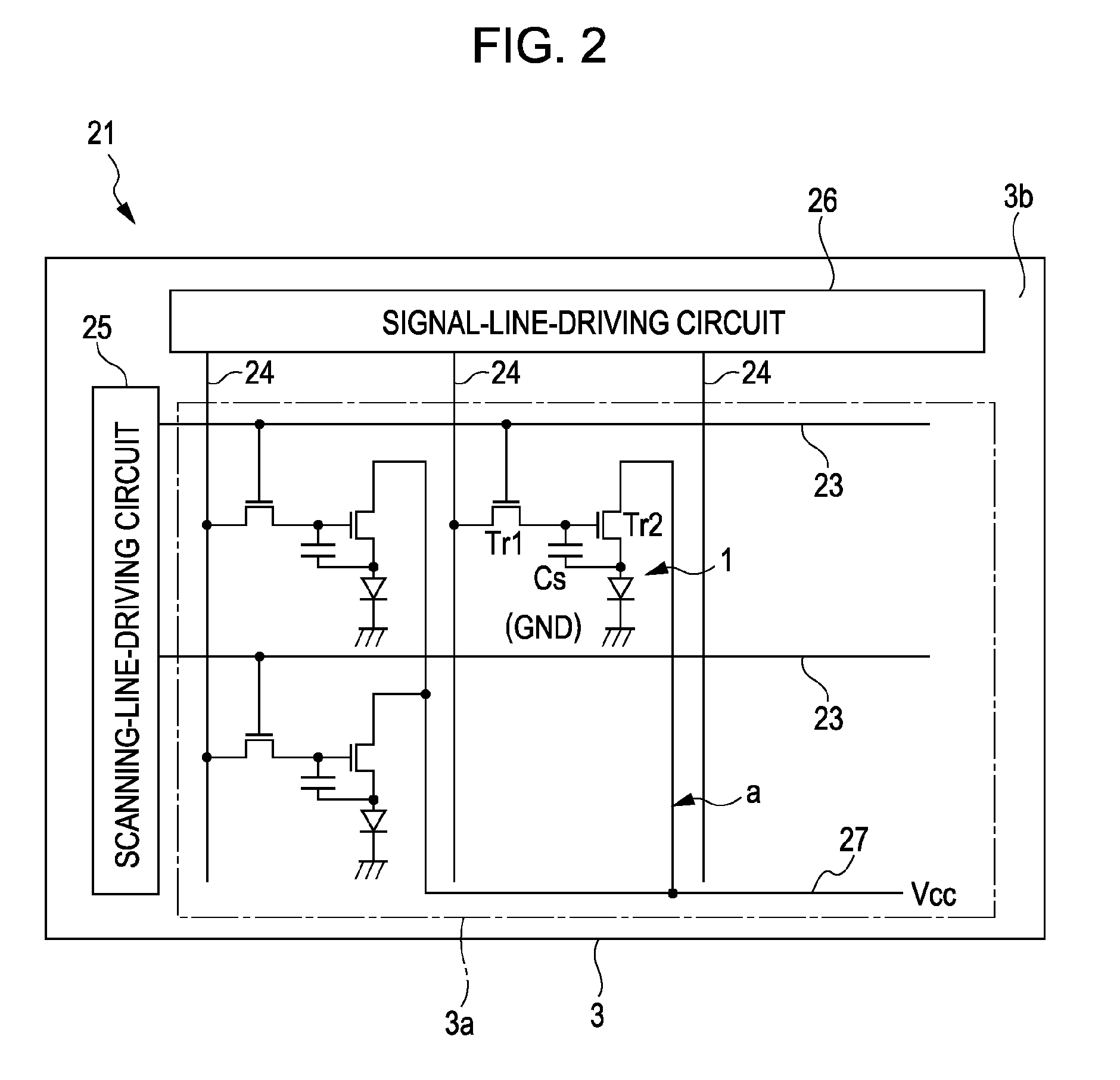Organic electroluminescent element, display, and electronic apparatus
a technology of electroluminescent elements and electronic devices, applied in the direction of solid-state devices, semiconductor devices, thermoelectric devices, etc., can solve problems such as deterioration of lifetime characteristics, and achieve the effect of preventing the occurrence of dark and bright spots and satisfactory lifetime characteristics
- Summary
- Abstract
- Description
- Claims
- Application Information
AI Technical Summary
Benefits of technology
Problems solved by technology
Method used
Image
Examples
examples
[0072]Procedures for making organic electroluminescent elements according to examples and comparative examples of the present invention will be described with reference to FIG. 1, and then evaluation results thereof will be described.
examples 8 to 14
[0082]The procedure was performed up to the formation of the luminous sublayer 7b as in Examples 1 to 7. The 15-nm-thick electron-transport sublayer 7c composed of compound (N-10) was formed. The transition-metal-complex layer 9 composed of compound (A-3) was formed so as to have a thickness of 0.1 nm to 25 nm. The negative electrode 11 in which a 12-nm-thick MgAg film was stacked on a 1-nm-thick lithium fluoride (LiF) film was formed.
[0083]Like Examples 1 to 7, a protective film was formed, and a glass substrate was bonded, thereby affording the top-emission organic electroluminescent element 1.
[0084]For each of the organic electroluminescent elements produced in Examples 8 to 14, a current efficiency (cd / A) was measured during driving at a current density of 10 mA / cm2. A load was driven at a constant current, a temperature of 50° C., a duty of 25%, and a current density of 50 mA / cm2. The time taken to reduce initial luminance 1 to 0.5 was measured as lifetime (hr).
[0085]Table 2 sh...
PUM
 Login to View More
Login to View More Abstract
Description
Claims
Application Information
 Login to View More
Login to View More - R&D
- Intellectual Property
- Life Sciences
- Materials
- Tech Scout
- Unparalleled Data Quality
- Higher Quality Content
- 60% Fewer Hallucinations
Browse by: Latest US Patents, China's latest patents, Technical Efficacy Thesaurus, Application Domain, Technology Topic, Popular Technical Reports.
© 2025 PatSnap. All rights reserved.Legal|Privacy policy|Modern Slavery Act Transparency Statement|Sitemap|About US| Contact US: help@patsnap.com



